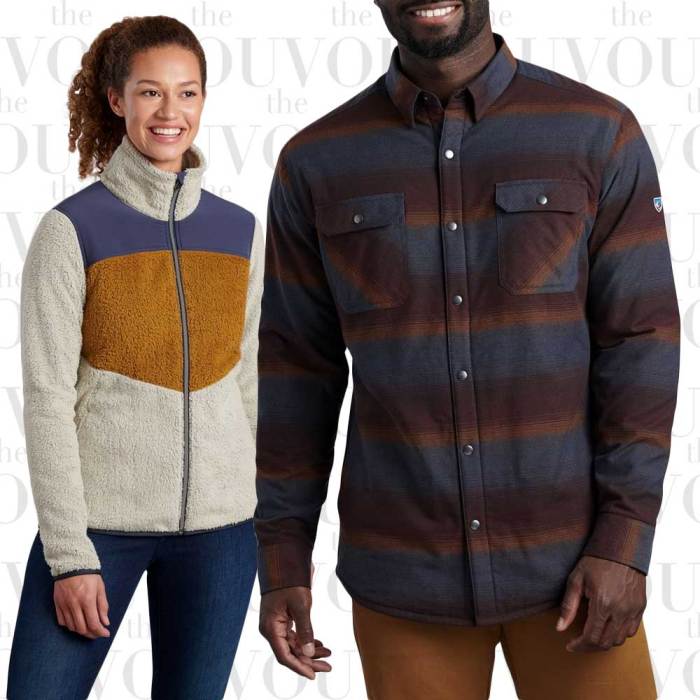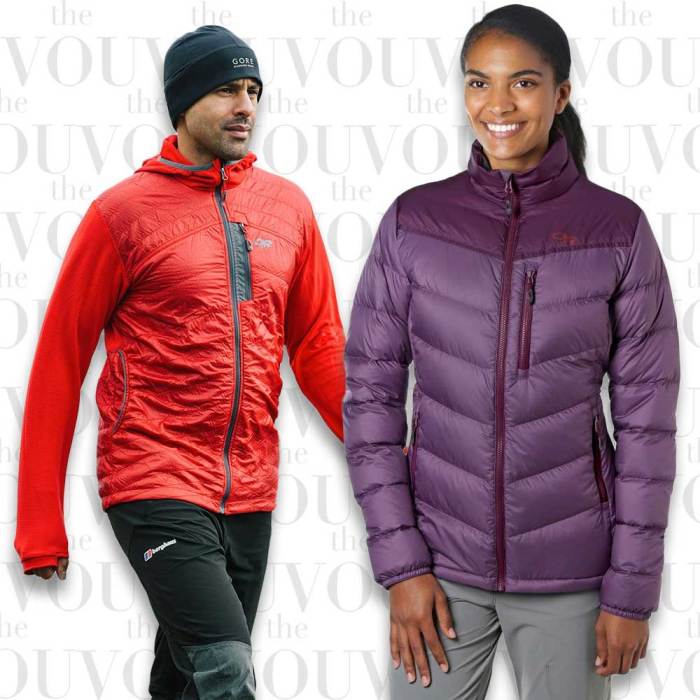Embarking on outdoor adventures and maintaining an active lifestyle requires clothing that’s not only comfortable but also functional and durable. 2025 sees a continued evolution in outdoor apparel technology, prioritizing sustainability, performance, and versatility. This comprehensive guide explores the best clothing options for various activities and conditions, ensuring you’re equipped for any challenge.
Layering for Success: The Foundation of Outdoor Apparel
The layering system remains paramount for managing temperature fluctuations during outdoor activities. Proper layering allows you to adapt to changing conditions quickly and efficiently, preventing overheating or hypothermia. A typical layering system consists of three layers:
Base Layer: Wicking Wonders
The base layer sits closest to your skin and its primary function is to wick away moisture. Synthetic materials like polyester and merino wool are excellent choices. Polyester offers superior moisture-wicking properties and dries quickly, while merino wool provides natural odor resistance and insulation. Consider factors like:
- Activity Level: High-intensity activities may benefit from lightweight, quick-drying fabrics. Lower-intensity activities can tolerate slightly heavier base layers for added warmth.
- Climate: Choose lightweight fabrics for warmer climates and heavier fabrics for colder conditions.
- Fit: A snug but not restrictive fit is ideal for optimal performance.
Mid Layer: Insulation and Warmth
The mid layer provides insulation and traps body heat, regulating your temperature. Popular choices include fleece jackets, lightweight down jackets, or synthetic insulated jackets. Factors to consider include:
- Insulation Type: Down provides excellent warmth-to-weight ratio, while synthetic insulation performs well even when wet.
- Loft: The loft (thickness) of the insulation determines the warmth level.
- Breathability: A breathable mid layer prevents overheating.
Outer Layer: Protection from the Elements
The outer layer shields you from wind, rain, and snow. This layer should be waterproof, windproof, and breathable. Look for jackets and pants made from durable, water-resistant fabrics like Gore-Tex, eVent, or other similar technologies. Key considerations include:
- Waterproofness: Measured in millimeters of water pressure (higher is better).
- Breathability: Allows moisture vapor to escape, preventing clamminess.
- Durability: Choose durable fabrics that can withstand abrasion and tearing.
- Features: Consider features like adjustable hoods, pit zips for ventilation, and multiple pockets.
Specific Apparel for Different Outdoor Activities
The ideal clothing choices vary depending on the specific activity. Let’s explore some popular outdoor pursuits:
Hiking and Trekking:
For hiking and trekking, prioritize comfort, durability, and protection from the elements. Moisture-wicking base layers, insulating mid layers, and waterproof/windproof outer layers are essential. Consider sturdy hiking boots, comfortable hiking socks, and a wide-brimmed hat for sun protection.
Trail Running:
Trail running demands lightweight, breathable clothing that allows for a full range of motion. Moisture-wicking base layers, lightweight shorts or tights, and a breathable running jacket are ideal. Choose trail running shoes with good grip and support.

Source: fashnfly.com
Camping and Backpacking:
Camping and backpacking require versatile clothing that can handle a range of temperatures and conditions. Layering is crucial, and you’ll want durable, weather-resistant clothing that can withstand the elements. Consider packing warm layers for cooler evenings and mornings.
Rock Climbing and Bouldering:
Rock climbing and bouldering require clothing that allows for maximum freedom of movement and grip. Lightweight, breathable fabrics are best. Avoid anything too bulky or restrictive. Climbing-specific shoes are essential.
Water Sports:
Water sports necessitate specialized clothing designed for wet conditions. Neoprene wetsuits or rash guards provide insulation and protection from the sun and cold water. Quick-drying swimwear is also essential.
Choosing Sustainable and Ethical Outdoor Apparel
The outdoor industry is increasingly focused on sustainability and ethical practices. Look for brands committed to using recycled materials, reducing their environmental impact, and ensuring fair labor practices. Consider brands that utilize recycled polyester, organic cotton, or other sustainable materials. Supporting these brands helps promote responsible manufacturing and a healthier planet.
Accessories: Don’t Forget the Details
Accessories play a crucial role in ensuring comfort and safety during outdoor adventures. Consider the following:
- Hats: Wide-brimmed hats for sun protection, beanies for warmth.
- Gloves: Waterproof and insulated gloves for cold weather.
- Socks: Moisture-wicking hiking socks to prevent blisters.
- Backpack: A comfortable and appropriately sized backpack for carrying gear.
- Sunglasses: Protect your eyes from the sun’s harmful rays.
Frequently Asked Questions (FAQs)
- Q: What is the best material for a base layer? A: Merino wool and synthetic materials like polyester are excellent choices for base layers, offering moisture-wicking and odor-resistant properties.
- Q: How many layers should I wear? A: The number of layers depends on the weather conditions and your activity level. The three-layer system is a good starting point, but you may need to adjust based on your needs.
- Q: What is the difference between down and synthetic insulation? A: Down insulation is lighter and warmer, but loses its insulating properties when wet. Synthetic insulation retains its warmth even when wet.
- Q: How do I choose a waterproof jacket? A: Look for jackets with a high water column rating (measured in millimeters) and good breathability. Consider features like taped seams and a well-designed hood.
- Q: What are some sustainable outdoor apparel brands? A: Patagonia, REI Co-op, and many others are increasingly focused on sustainable and ethical practices. Research brands that align with your values.
Resources
- REI Co-op
– A comprehensive resource for outdoor gear and information. - Patagonia
– A leading brand known for its commitment to sustainability. - Outdoor Gear Lab
-Provides in-depth reviews of outdoor gear.
Call to Action
Investing in high-quality, functional outdoor apparel is an investment in your comfort, safety, and enjoyment of the outdoors. Use this guide to choose the best clothing for your next adventure and explore the world with confidence! Start planning your next outdoor excursion today!

Source: wixstatic.com
Answers to Common Questions
What fabrics are best for moisture-wicking?
Merino wool, polyester, and synthetic blends are excellent choices for their moisture-wicking properties.
How important is layering?

Source: fashnfly.com
Layering is crucial for regulating body temperature in changing conditions. Base layers wick moisture, mid-layers provide insulation, and outer layers offer protection from the elements.
What about sun protection?
Look for clothing with a UPF (Ultraviolet Protection Factor) rating to shield your skin from harmful UV rays. Wide-brimmed hats and sunglasses also offer additional protection.
Where can I find sustainable outdoor clothing?
Many brands are now focusing on sustainable practices. Research brands committed to using recycled materials, ethical labor practices, and minimizing their environmental impact.
